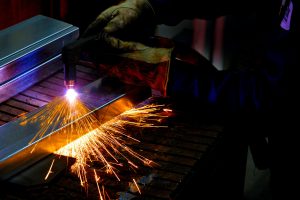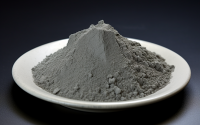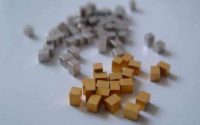Molybdenum-Rhenium Alloys for Welding
Adding Rhenium Can Improve Properties
Metal molybdenum has high hardness, high melting point, good high-temperature strength, and excellent electrical and thermal conductivity. However, some disadvantages limit its applications. For example, molybdenum is brittle at room temperature; molybdenum has poor processability; molybdenum is easy to oxidize; molybdenum is tough and brittle, and its transformation temperature is high. Adding a certain amount of rhenium to molybdenum can greatly improve these shortcomings. The addition of rhenium reduces the plastic-brittle transition temperature, which makes the molybdenum-rhenium alloy have good room-temperature performance; the addition of rhenium increases the recrystallization temperature and improves the high-temperature performance of the molybdenum-rhenium alloy. In addition, the molybdenum-rhenium alloy has excellent welding properties, radiation resistance properties, and thermoelectric properties. At present, molybdenum-rhenium alloys are widely used in aerospace, heating equipment, the nuclear industry, and many other fields.
Molybdenum-Rhenium Alloys for Welding
With the continuous development of engineering practice, higher requirements are put forward for materials. Molybdenum-rhenium alloy is a high-temperature refractory metal alloy, which is a promising material, but there are still many problems in the welding of molybdenum-rhenium alloy. Due to their own characteristics, molybdenum-rhenium alloys are sensitive to C, N, and O, and show the characteristics of high temperature and easy oxidation. The welded joints are easy to form pores and generate brittle compounds, resulting in performance degradation. In order to meet the needs of industrial production, expand the application range of molybdenum-rhenium alloy, and carry out research work on molybdenum-rhenium alloy welding technology, it is particularly urgent and important. At present, the methods of molybdenum-rhenium alloy welding mainly include electron beam welding, laser welding, resistance welding, friction welding, and vacuum brazing.

Electron beam welding
In the fusion welding of molybdenum-rhenium alloy, electron beam welding is widely used, which can suppress the adverse effects of oxygen and nitrogen in a vacuum environment, and the welding energy is concentrated, but the weldment is limited by the size of the vacuum chamber, and the equipment requirements high.
Laser welding
Laser welding of molybdenum-rhenium alloy has a small heat-affected zone, fine grains in the weld seam, low vacuum brazing welding temperature, and little influence on the base metal, and can obtain welded joints with excellent performance.
Solution
In order to solve the problems in the welding process of molybdenum-rhenium alloys, low-oxygen or ultra-low-oxygen welding should be used. The heat input is usually selected to ensure minimum penetration, preheating, and proper slow cooling before welding to reduce the tendency of cold cracking. Through the transition alloy elements, Ti, Zr, and Pt in the welded joints to refine the grain or reduce the solidification temperature, reduce impurities and thermal stress in the weld to improve the performance of the weld, all of which are promising research directions for molybdenum-rhenium alloy welding.
Conclusion
Molybdenum-rhenium alloy is a promising material used in the welding industry, but research on its weldability is still going on. Scholars tried to analyze and summarize the problems in its welding and pointed out that preventing the formation of brittle phases, pores and cracks is the key to obtaining good welded joints of molybdenum-rhenium alloys.
For more information, please visit https://www.samaterials.com/



